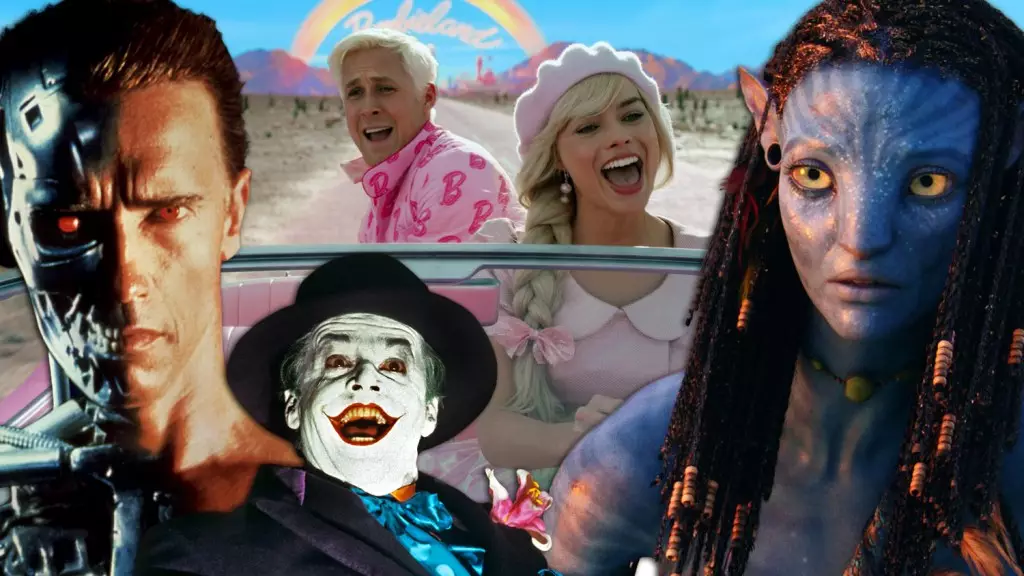The North American box office has been a battleground for filmmakers, studios, and marketers, serving as a barometer of trends, audience preferences, and cultural moments. Since 1977, a clear hierarchy of cinematic triumphs has emerged, with films breaking records and setting benchmarks for financial success. In this article, we aim to analyze and reflect on the trends that have dominated the box office landscape, particularly focusing on the recent addition of “Inside Out 2,” a sequel to Pixar’s beloved original.
Over the years, certain genres and franchises have consistently emerged as box office titans. One cannot overlook the overwhelming presence of superhero films, animated features, and franchises like Star Wars and Harry Potter. A comparative analysis makes it evident that studios like Disney and Warner Bros. have strategically positioned their powerhouses to dominate the charts. In fact, Disney has secured its place at the top, with multiple titles crossing the $600 million mark among their releases, while Warner Bros., Paramount, and Sony have also carved out their niches.
The franchise model has become crucial for film studios to ensure financial success. By focusing on sequels and reboots, companies can build existing fanbases, mitigating the risks inherent in producing entirely new stories. For instance, the success of films like “Frozen II” and the imminent “Inside Out 2” showcases Disney’s reliance on established narratives to rake in profit.
Animation has become a significant player at the box office, transcending its reputation as merely ‘children’s entertainment.’ Titles from Pixar, Disney, and other animation studios have changed perceptions and expectations. For instance, “Inside Out 2,” set to be a frontrunner for box office success, rides on the nostalgic appeal of its predecessor while aiming to capture a younger audience. It’s indicative of a broader trend where animated sequels are met with anticipation and excitement, often yielding impressive box office returns.
Similarly, the superhero genre continues to flourish. Movies like “Avengers: Endgame” and “Spider-Man: No Way Home” have not only broken records but also united diverse fan demographics. This inclusion serves to strengthen the genre’s viability in the market. The cultural impact of these films, showcasing collective heroism and moral dilemmas, resonates strongly with audiences, further driving box office sales.
The Role of Marketing and Release Dates
Apart from genre dominance, marketing strategies and optimal release dates play significant roles in a film’s financial success. Understanding audience behavior and critical holiday periods has enabled studios to maximize their box office earnings. For example, holiday releases often guarantee a larger, more family-oriented audience, as evidenced by the release of films during Thanksgiving and Christmas.
Marketing campaigns that create buzz and anticipation, utilizing social media and fan engagement, are also key to a successful launch. High-profile trailers and teaser campaigns can generate substantial pre-release interest, further translating to box office numbers that exceed projections.
The world of cinema is at a crucial juncture as streaming platforms continuously shape viewer preferences. As seen with sequels like “Inside Out 2,” theatrical releases have to compete with the allure of immediate home viewing. However, with strategic planning and franchise loyalty, it’s plausible that box office numbers may continue to soar, with distributors leveraging nostalgia while forging ahead with innovative storytelling.
As we look back on North America’s highest-grossing films since 1977, it becomes clear that trends, strategic marketing, and the franchise model have profoundly influenced box office outcomes. The landscape continues to evolve, but the underlying elements of audience connection, brand loyalty, and clever marketing will remain the pillars upon which box office successes are built. As the 2024 film calendar unfolds, it will be intriguing to observe how these dynamics play out, especially with the momentum set to be carried forward by films like “Inside Out 2.”

